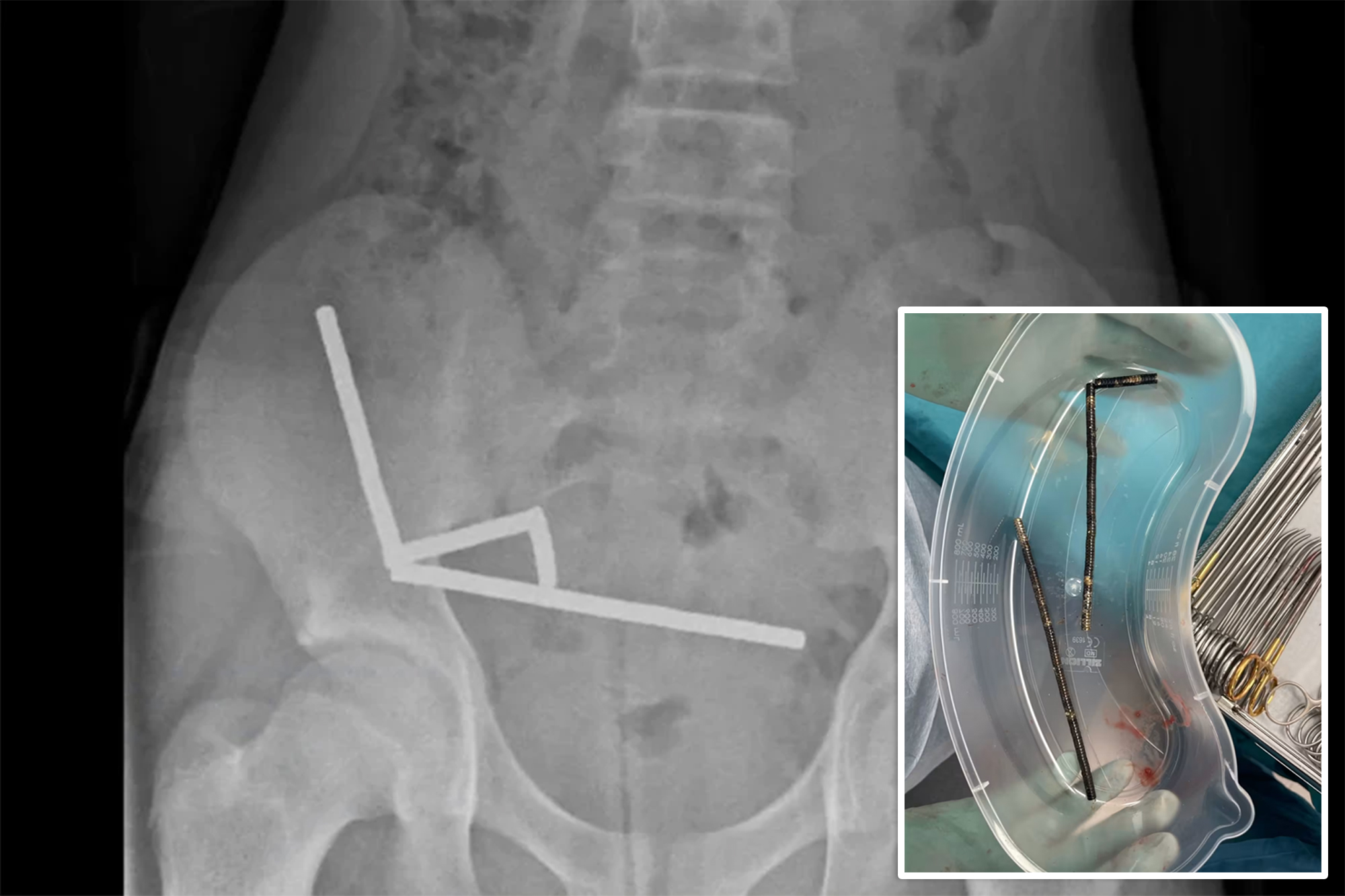A 13-year-old boy from New Zealand required emergency surgery after swallowing over 100 high-powered magnets, leading to severe intestinal complications. He was admitted to Tauranga Hospital on the North Island following four days of abdominal pain, during which he revealed to doctors that he had ingested between 80 and 100 small neodymium magnets about a week earlier. A case report published in the New Zealand Medical Journal indicates that surgeons ultimately recovered closer to 200 magnets from his intestines.
X-rays conducted upon admission revealed that four chains of magnets had become lodged in different sections of the boy’s intestines. This arrangement caused them to pull together, cutting off blood flow to nearby tissues. The pressure from the magnets resulted in multiple patches of necrosis, which is the death of intestinal lining, necessitating an emergency surgical procedure. Surgeons removed both the magnets and segments of the damaged bowel during the operation.
The boy, whose name has not been disclosed, spent eight days in the hospital before being discharged. The team of doctors, which included Binura Lekamalage, Lucinda Duncan-Were, and Nicola Davis, emphasized the case’s significance, stating, “This case highlights not only the dangers of magnet ingestion but also the dangers of the online marketplace for our pediatric population.”
New Zealand implemented a ban on the sale of small, high-powered magnets in 2013 following numerous incidents of children swallowing them. These magnets, composed of neodymium-iron-boron, are marketed as toys or stress relievers and are reported to be up to 30 times stronger than standard refrigerator magnets. If ingested, they can snap together with sufficient force to pinch or perforate intestinal tissue.
Despite the ban, these magnets remain readily available in online marketplaces, including popular platforms like Amazon, AliExpress, Trade Me, and Shein. The boy indicated that the magnets he swallowed were purchased via Temu, a rapidly growing e-commerce platform. In response to the incident, Temu released a statement indicating that an investigation is underway, although the company has not confirmed whether the magnets in question were purchased from its site.
“We are sorry to learn about the reported incident and wish the boy a full and speedy recovery,” a spokesperson for Temu said. “At this stage, we have not been able to confirm whether the magnets involved were purchased through Temu or identify the specific product listing.” The company further noted that it has initiated an internal review and has contacted the New Zealand Medical Journal for additional details on the case. “Our teams are reviewing relevant listings to ensure full compliance with local safety requirements,” the spokesperson added.
The magnets involved in this case measured 5 by 2 millimeters each and had clumped into four straight lines within the boy’s intestines. This magnetic attraction caused various segments of the bowel to stick together, pinching the tissue in between. Surgeons warned that patients who undergo similar magnet removal surgeries often face long-term complications, including bowel obstructions, hernias, or chronic abdominal pain.
In light of this incident, Alex Sims, a researcher at the University of Auckland who specializes in commercial law and product regulation, highlighted the challenges of enforcing New Zealand’s decade-old magnet ban in the context of online marketplaces. “While enforcement is problematic, as it is more difficult for the Commerce Commission to investigate and force overseas online marketplaces to stop the sale of small high-powered magnets, it is concerning if children are purchasing goods on online marketplaces,” said Sims.
As the investigation continues, this alarming incident serves as a reminder of the potential dangers associated with online shopping, particularly for children. Authorities and parents alike are urged to remain vigilant regarding the types of products available in the marketplace.







